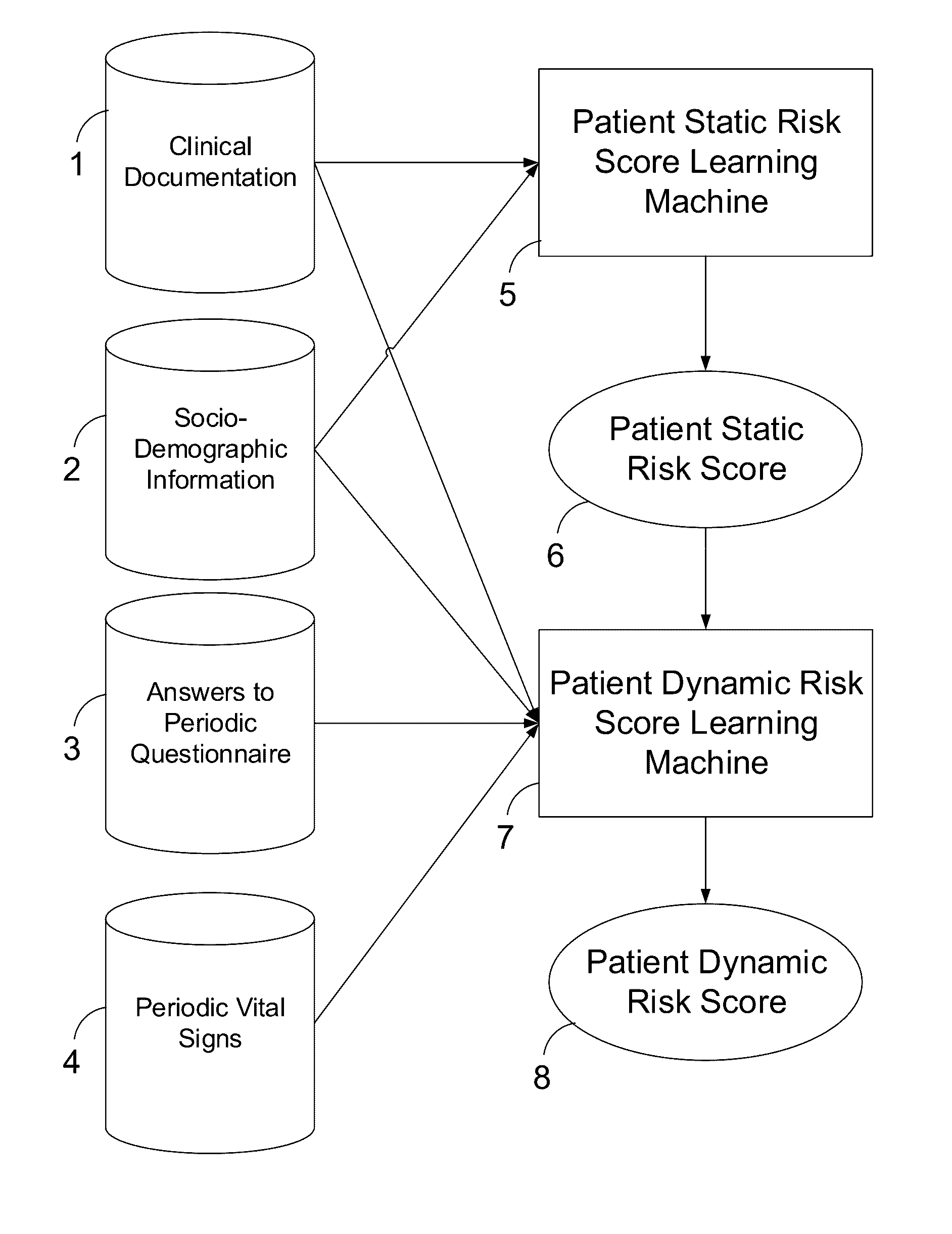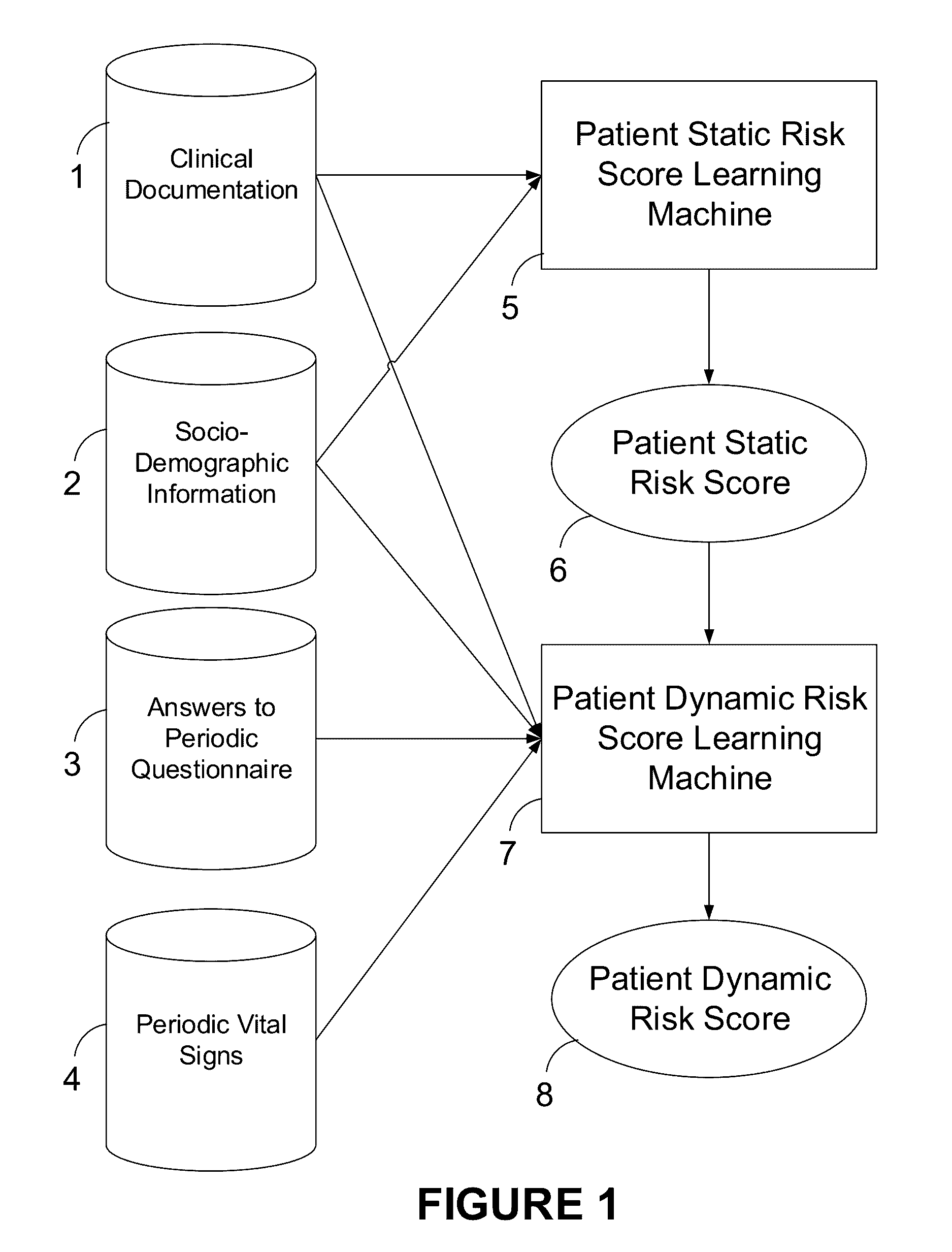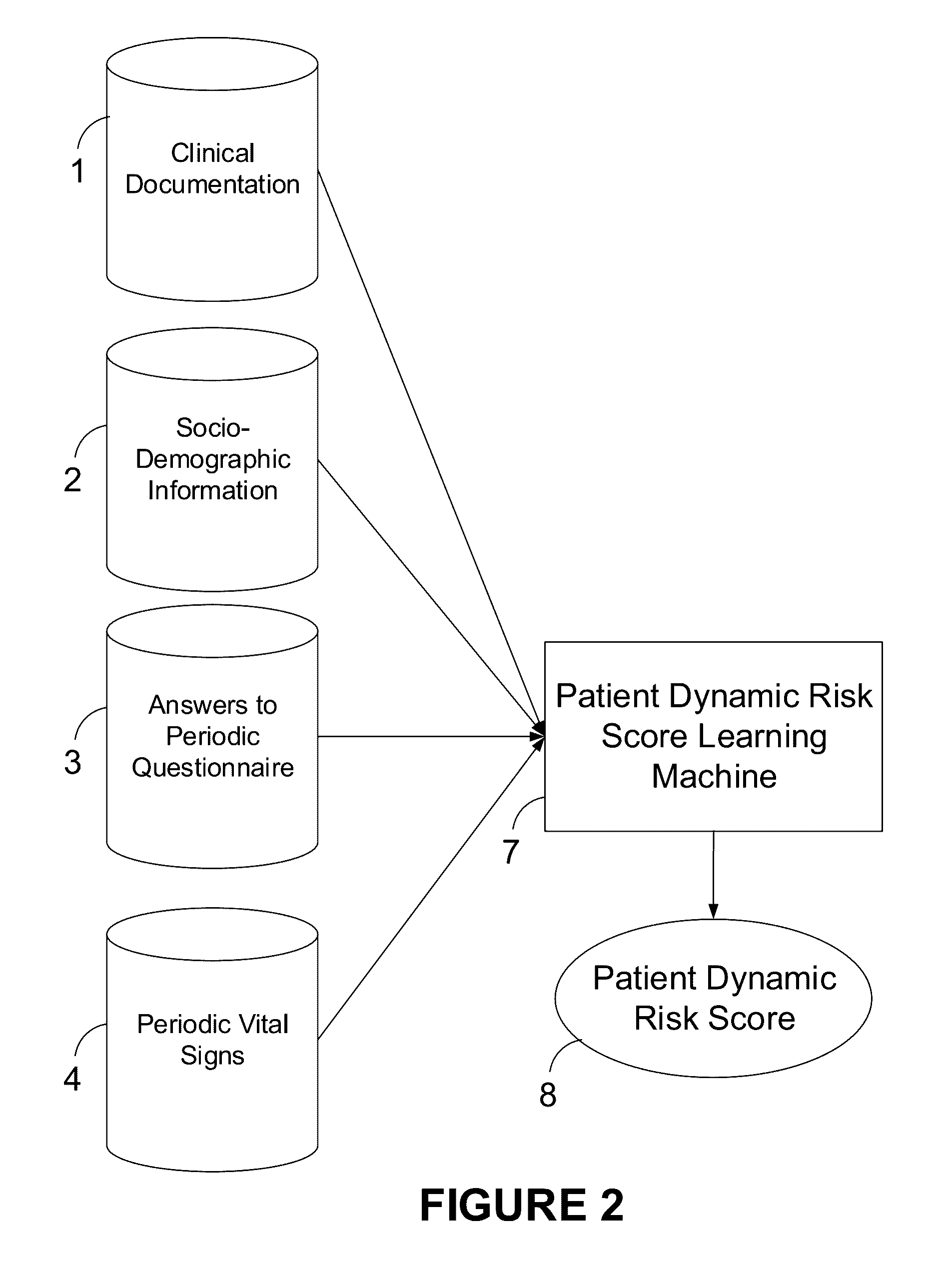Method for predicting adverse events for home healthcare of remotely monitored patients
a remote monitoring and adverse event technology, applied in the field of machine learning for predicting adverse events, can solve problems such as linear functions of models, and achieve the effect of maintaining patients at home longer
- Summary
- Abstract
- Description
- Claims
- Application Information
AI Technical Summary
Benefits of technology
Problems solved by technology
Method used
Image
Examples
Embodiment Construction
[0062]FIG. 1 shows the architecture of the system for predicting adverse events for home healthcare of remotely monitored patient according to an embodiment. Clinical Documentation Database 1, Socio-Demographic Database 2, Answers to Periodic Questionnaire Database 3 and Periodic Vital Signs Database 4 are examples of data sources that the system uses. Other data sources can be included would they be available.
[0063]In this example, Clinical Documentation Database 1 comprises the clinical documentation data source that includes, but is not limited to, the patient medical history, prescribed drugs and medical assessments. The data in the Clinical Documentation Database 1 are therefore long term data which do not vary on a day-to-day basis.
[0064]Socio-Demographic Database 2 comprises the patient socio-demographic information that includes, but is not limited to, the patient age, sex, race, and height. The data in the Socio-Demographic Database 2 are therefore long term data which do n...
PUM
 Login to View More
Login to View More Abstract
Description
Claims
Application Information
 Login to View More
Login to View More - R&D
- Intellectual Property
- Life Sciences
- Materials
- Tech Scout
- Unparalleled Data Quality
- Higher Quality Content
- 60% Fewer Hallucinations
Browse by: Latest US Patents, China's latest patents, Technical Efficacy Thesaurus, Application Domain, Technology Topic, Popular Technical Reports.
© 2025 PatSnap. All rights reserved.Legal|Privacy policy|Modern Slavery Act Transparency Statement|Sitemap|About US| Contact US: help@patsnap.com



